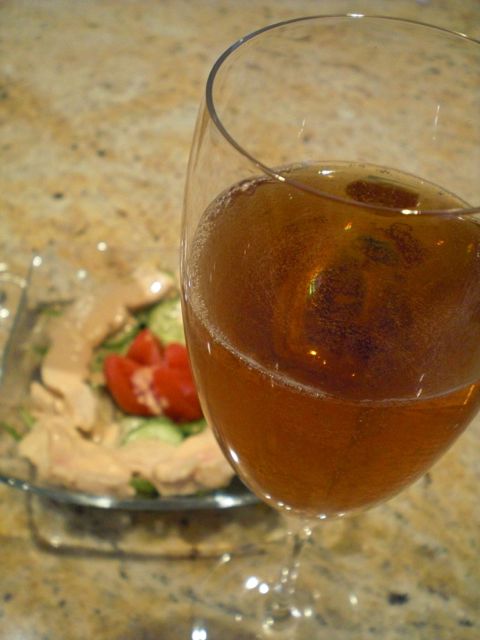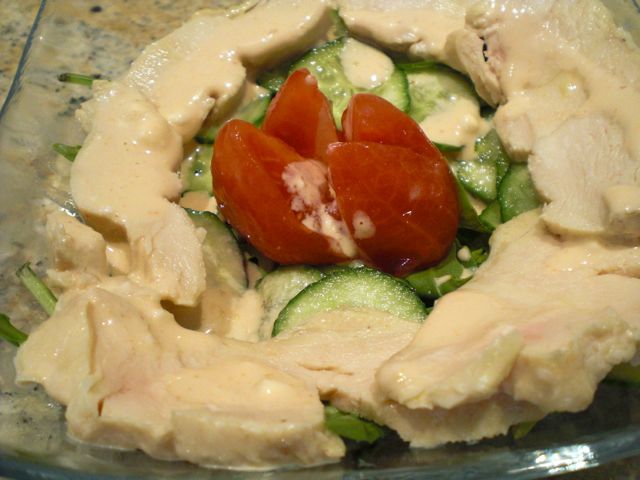Mead must be one of the earliest alcoholic beverages human had on hand. Essentially honey water fermented, which could happen naturally. Although the name "Honey mead" sounds like a sweet beverage, in its original form, it is totally dry since all the sugar is converted to alcohol. Some of the commercial meads are sweet because of the addition of honey or sugar after fermentation.
One of the problems with brewing is contamination which can give rise to off-tastes. Keeping sanitary conditions is very important when fermenting anything, either wine, beer or mead. My understanding is that, in the old days, because off-tastes often developed in mead due to contamination, honey was added to cover up the bad taste which gave rise to "sweet" mead. Mine was done under strict sanitary conditions and is bone dry.

This was a sparkling mead with hops. Apparently, I had easy access to freeze dried quality hops at that time. I do not remember the exact recipe but I must have used a fragrant finishing hop and Champagne yeast which can ferment to a higher alcohol level than ale or wine yeast. After 20 years of bottle aging (I used a beer bottle which was capped with a crown), the bubbles were rather weak but the color was nice dark brown as you can see above.

I was amazed that my mead survived for 20 years in our basement (we actually have quite a supply including some bottled in champagne bottles--I must have been quite industrious at one point). I have another batch flavored with raspberries (from 1995, I think) which we should try next. Only problem is, once we drink this supply It will be another 20 year wait for the next batch.
It is dry but the aromatic flavors of the honey was still there. Hops were added because of the taste and as a preservative but at this point, only a very subtle bitterness (which is quite refreshing) remains.
I concocted a quick chicken salad to go with the mead. The chicken was sliced microwave sake-steamed chicken breast. I placed it on a bed of baby arugula with sliced mini-cucumber (salted and extra moisture rung out), a skinned and quartered Campari tomato. The dressing was a mixture of mayonnaise and plain yogurt seasoned with hot sauce (Sriracha) and soy sauce. The proportion of mayo and yogurt is abut 1:1 (2 tbs each), hot sauce (1/2 tsp but this is totally up to your taste) and soy sauce (1/2 tsp). I diluted the mixture with the addition of juice from the chicken container (protein from chicken, salt, sake with flavor of ginger and scallion) but you could just use water to loosen the dressing or you do not have to make it loose. I drizzled the dressing over the salad.
The salad was pretty good. The heat from the hot sauce came on slowly but it is quite pleasant and went well with our mead.
